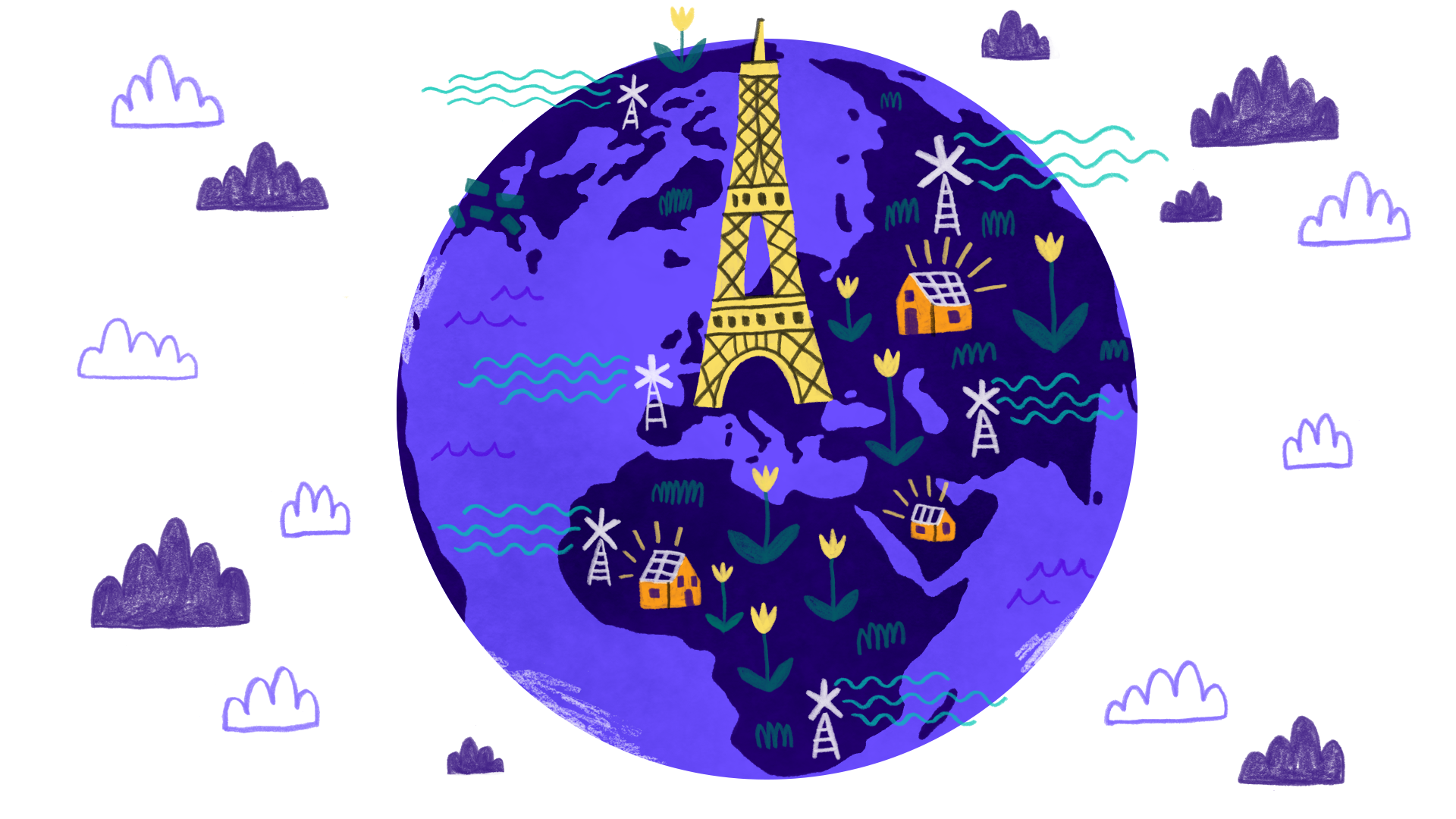The story
You might have heard global warming is a thing. World leaders have been working out what to do about it for decades. Let's break down the Paris Climate Agreement.
How did we get here?
For years, people around the world have been debating whether global warming is real, and whether human activity has anything to do with it. Climate scientists say it is. But others believe that changes in climate are all part of the Earth's natural cycle. For decades, most world leaders sided with the climate scientists and were hard at work on finding solutions. While that was happening, the US was mostly on the sidelines.
What do you mean?
Back in the ‘90s, a climate deal called the Kyoto protocol was written and eventually agreed to by almost 200 countries. It set up legally binding emissions goals for developed countries for the first time. Then-US Vice Prez Al Gore gave it two big green thumbs up. But Congress – annoyed that it didn’t include developing countries like China, and worried about how it could affect the US economy – said ‘ummm, no thanks.’ Without support from the US, one of the world’s gassiest countries, global climate change talks basically stalled.
Bummer. Then what happened?
When President Obama came on the scene, he made climate change a huge part of his presidential agenda. In 2009, he met with leaders of the world’s other major polluters (think: China, India) at a conference in Copenhagen. They agreed to cut their emissions for the first time. This would have been a BFD, but no legally binding agreement was ever officially inked. Womp.
What about the Paris Accord?
Back in 2015, world leaders finally got together in Paris and agreed on a plan to limit the rise in global temps and drastically reduce man-made emissions to a level that forests and oceans can absorb. Each country got its own targets to stop passing so much gas. And developing countries like India got a little cash money from developed ones like the US to help make it happen. All but Nicaragua and Syria signed their names on the dotted line.
So what did people think about it?
GOP lawmakers said ‘woah woah woah, we need to sign off on this,' while Dems said ‘about time.’ Meaning, yup, this became an election issue in the 2016 presidential race. The Democratic candidates – think: Hillary Clinton, Bernie Sanders – supported the US's commitment to the Paris climate agreement. But now-President Trump said the deal was unfair and promised to 'cancel' it.
What happened?
In the summer of 2017, Trump kept his campaign promise and announced that the US would withdraw from the Paris deal. To which many businesses and world leaders said, 'wtf.' They argued that leaving the deal would be bad for the planet and would make the US less competitive. But Trump said pulling out would protect millions of coal and oil jobs, plus save billions of US dollars by ending contributions to a fund that helps developing countries go green. Getting out of the deal could take up to four years.
Anything else?
A few months after Trump pulled the US out of the deal, there were smoke signals that he might be having second thoughts. When international officials huddled up to talk about climate change at a conference in September 2017, Team USA reportedly said they might be open to reconsidering staying in the deal under looser terms, like higher caps on greenhouse gas emissions. But the White House said 'false' and that the US is definitely kissing the deal goodbye.
theSkimm
UN scientists estimate that in recent years, hundreds of thousands of people have died in extreme weather events related to global warming. And after devastating storms and flooding everywhere from the US to South Asia this year, climate change is on everyone's minds.
Live Smarter
Sign up for the Daily Skimm email newsletter. Delivered to your inbox every morning and prepares you for your day in minutes.
